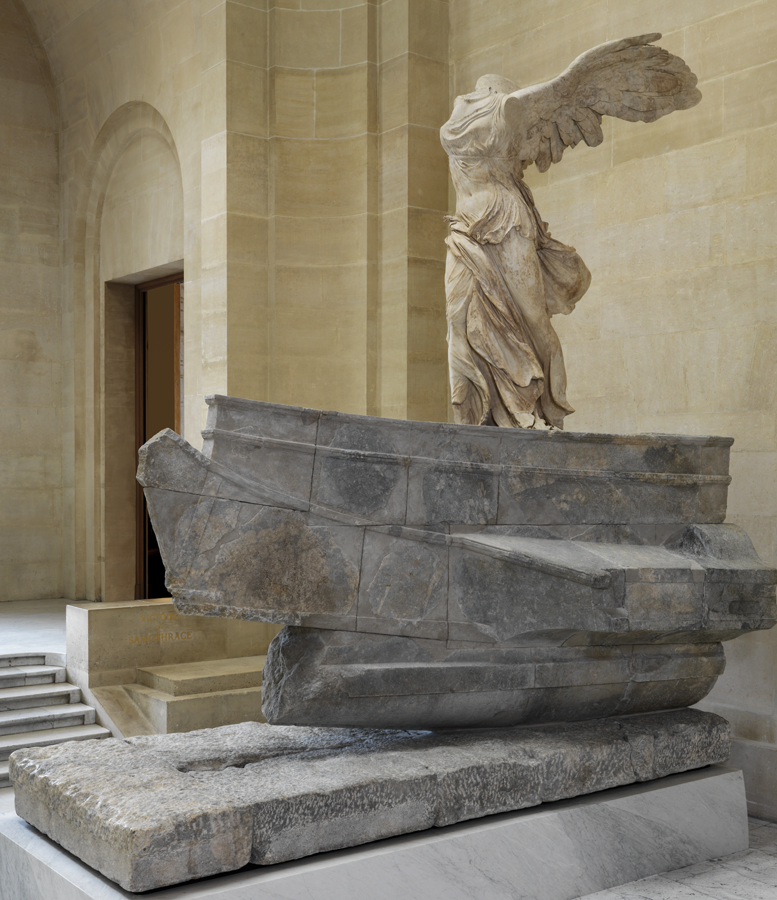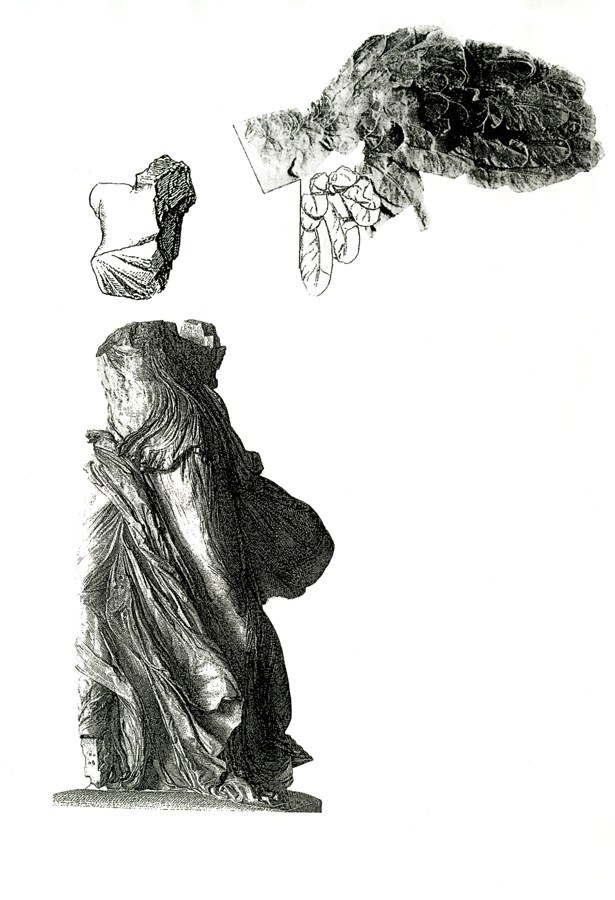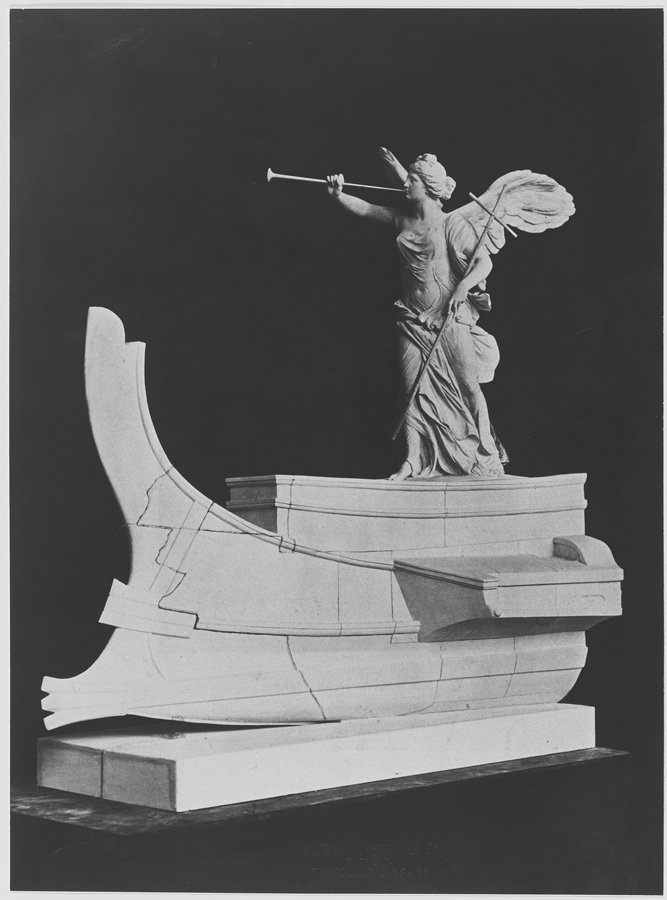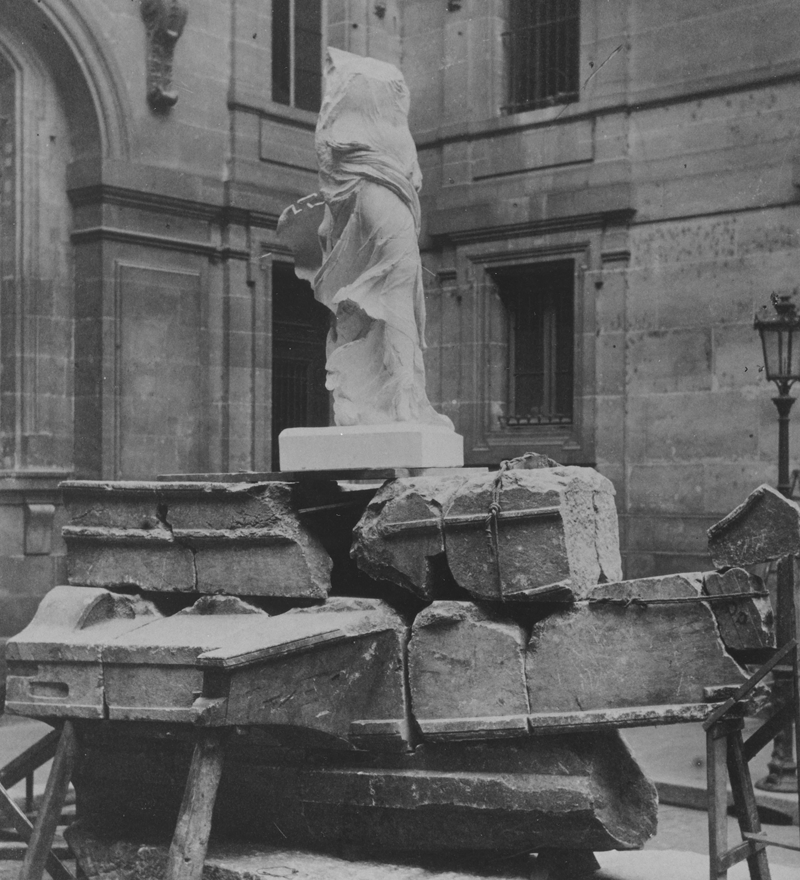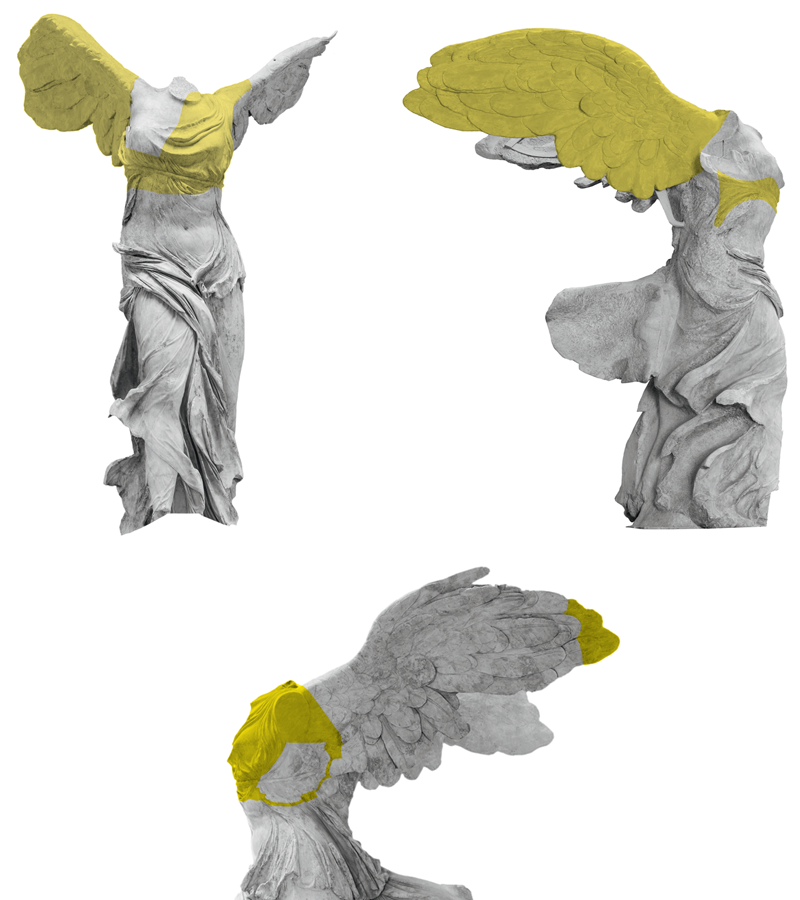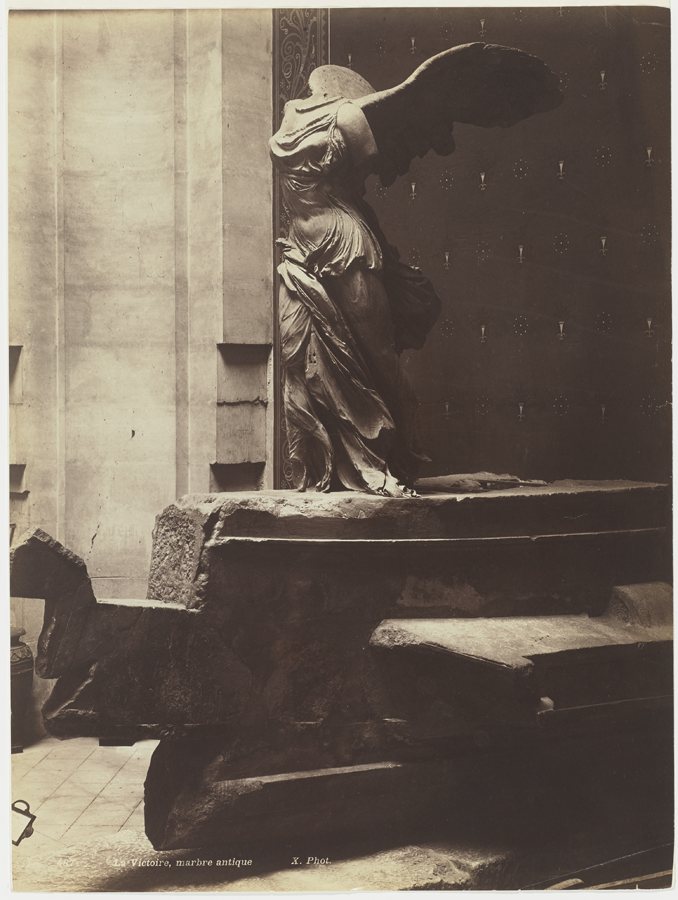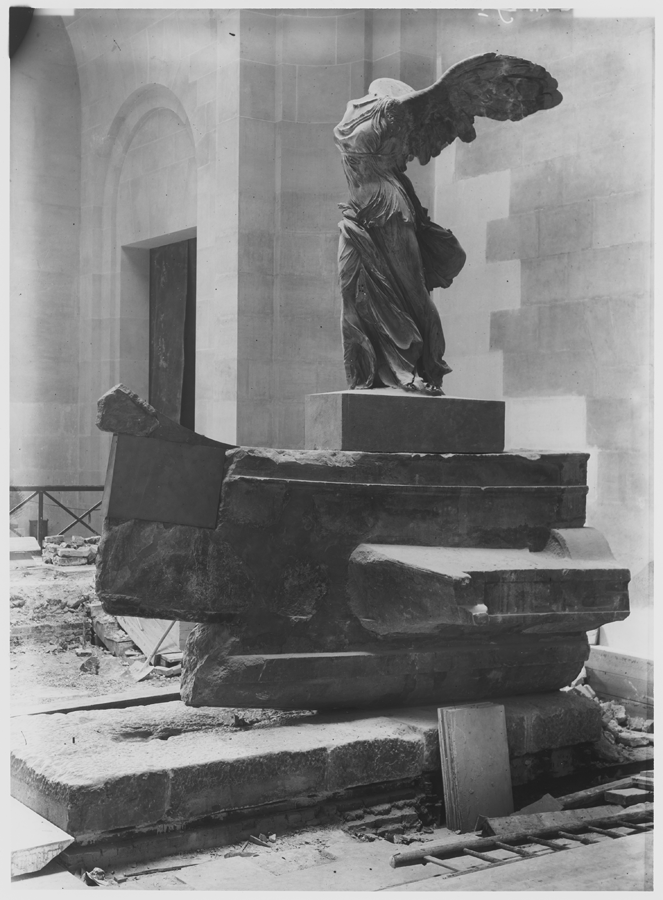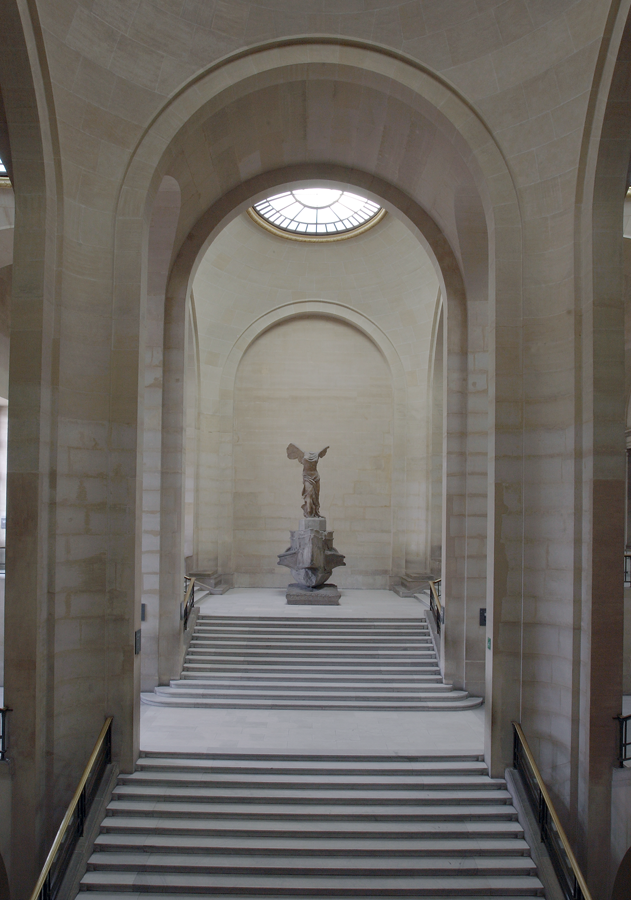Previous restorations
- From 1866 to 1880, only the Victory’s body, with several fragments and the rear drapery added, was exhibited in the Roman Sculpture galleries.
The Winged Victory of Samothrace in the former Salle du Tibre
- The right part of the torso and the almost complete left wing were kept in storage.
Montage of drawings by Nathalie Bruhière
- Austrian archaeologists proposed a scale model of the Victory monument (1875–1880).
Scale model of the monument by O. Benndorf and K. von Zumbusch
- In 1879, when the blocks of the base, depicting the prow of a ship, arrived in Paris, the first attempt to assembe them in a courtyard of the Louvre was conclusive.
The first assembly attempt in a courtyard of the Louvre
- A second restoration of the monument was undertaken. The principal missing parts of the statue were recreated in plaster: the right wing, the left part of the torso and the area around the belt.
The parts recreated in plaster by F. Ravaisson-Mollien (1880–1884)
- In 1883, the statue was mounted on the base and installed at the top of the Daru staircase.
The Victory at the top of the Daru staircase in 1884
- The Victory monument was placed frontally, directly facing the descending staircase.
The Victory at the top of the Daru staircase from 1901 to 1932
- With the advice of Captain Carlini, a specialist in ancient sea vessels,
Reconstruction proposed by Captain Carlini
- the third restoration was undertaken from 1932 to 1934:
Restoration of the prow with advice from Captain Carlini
- a modern block was inserted between the statue and the base, and the area around the monument refurbished.
The Victory at the top of the Daru staircase from 1934 to 2013
- The monument remained unchanged until 2013.
The Winged Victory of Samothrace seen from the Daru staircase
